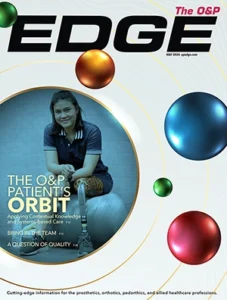Doctors at three leading research institutions and the American Diabetes Association report that treating patients with prediabetes as if they had diabetes could help prevent or delay the most severe complications associated with this chronic disease, which affects about 30 million people in the United States. Many amputees are at higher risk for the disease because of a sedentary lifestyle.
Writing in the September 23 online edition of the journal Diabetes Care, the authors-including the University of North Carolina’s (UNC’s) John Buse, MD, PhD, professor of medicine and director of the UNC Diabetes Care Center-said that patients who have a fasting blood sugar of 126 or higher are diagnosed with type 2 diabetes, and most patients are prescribed the first line medication metformin. People with fasting blood sugar levels between 100 and 125 are determined to have prediabetes.
The researchers said that by not devising a treatment strategy for people with prediabetes, doctors run the risk of creating a pool of future patients with high blood sugar who then become more likely to develop serious complications, such as kidney disease, blindness, amputations, and heart disease.
“We need to screen and track patients with prediabetes to manage their blood sugar more aggressively,” said Buse, chief of the division of endocrinology and deputy director of the NC TraCS Institute at UNC. “We’re very confident this would spare our patients serious health issues down the road.”
According to the authors, evidence for their view comes from clinical trials during which lifestyle change and/or glucose-lowering medications decreased the progression of prediabetes to type 2 diabetes. After withdrawal of the interventions, the future development of diabetes remained less in people who changed their lifestyle and/or took medications compared with the control group of prediabetic patients who did not have interventions.
Moreover, achieving normal glucose levels-even briefly during the trials-was associated with a substantial reduction in subsequent development of type 2 diabetes.
Based on such evidence, the authors said that current management should change in two ways. First, adults should be screened systematically to find prediabetes and early type 2 diabetes. And second, patients who are likely to benefit from treatment should have management aimed to keep their blood glucose levels as close to normal as possible.
Lawrence Phillips, MD, from Emory University and lead author of the editorial, said, “Diabetes is generally diagnosed and first treated about ten years later than it could be. We waste this critical opportunity to slow disease progression and the development of complications.
“There is a strong, new argument that by combining screening to find prediabetes and early diabetes, along with management aimed to keep glucose levels as close to normal as possible, we can change the natural history of the disease and improve the lives of our patients.”
This article was adapted from information provided by the University of North Carolina School of Medicine.




